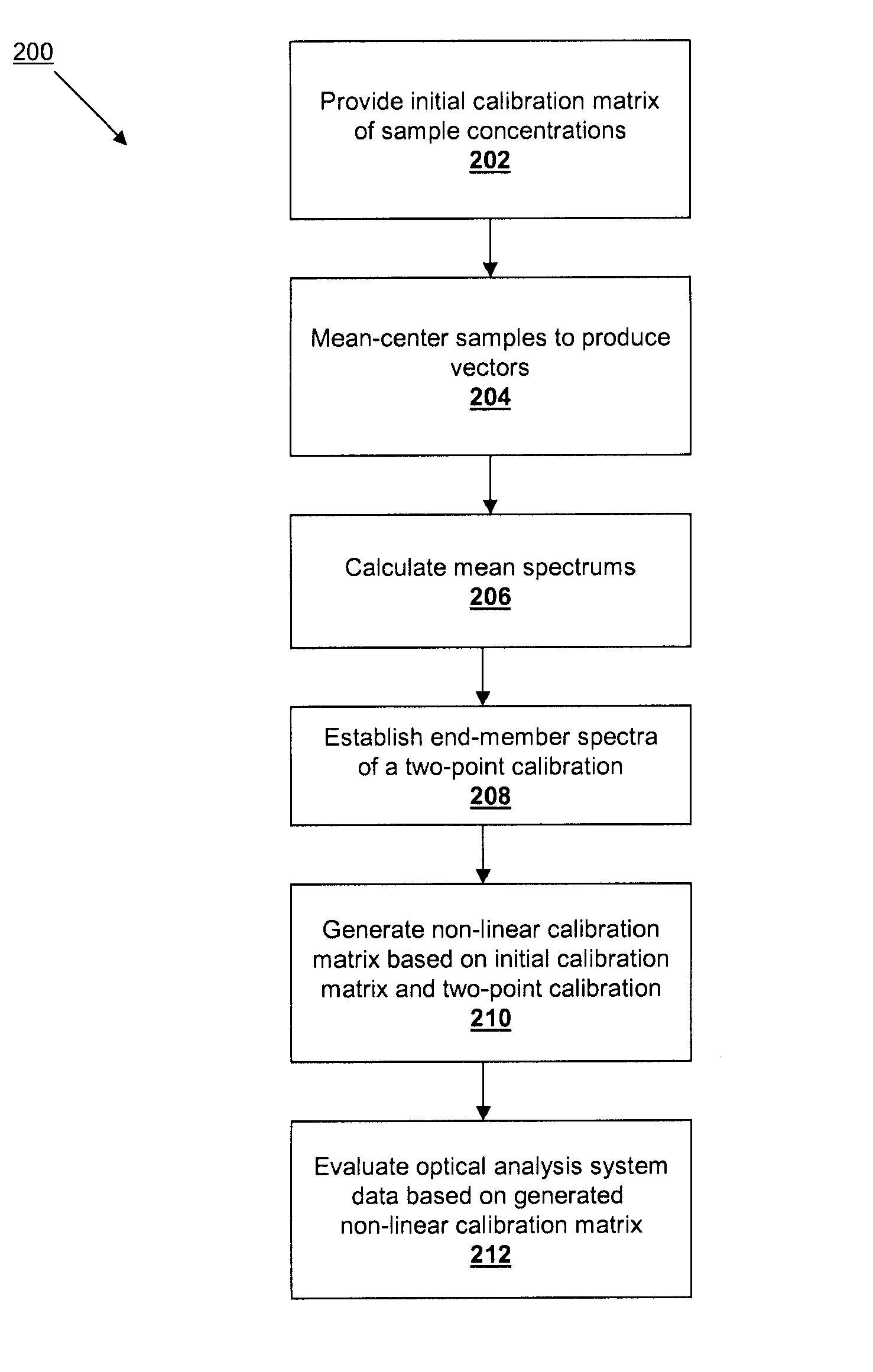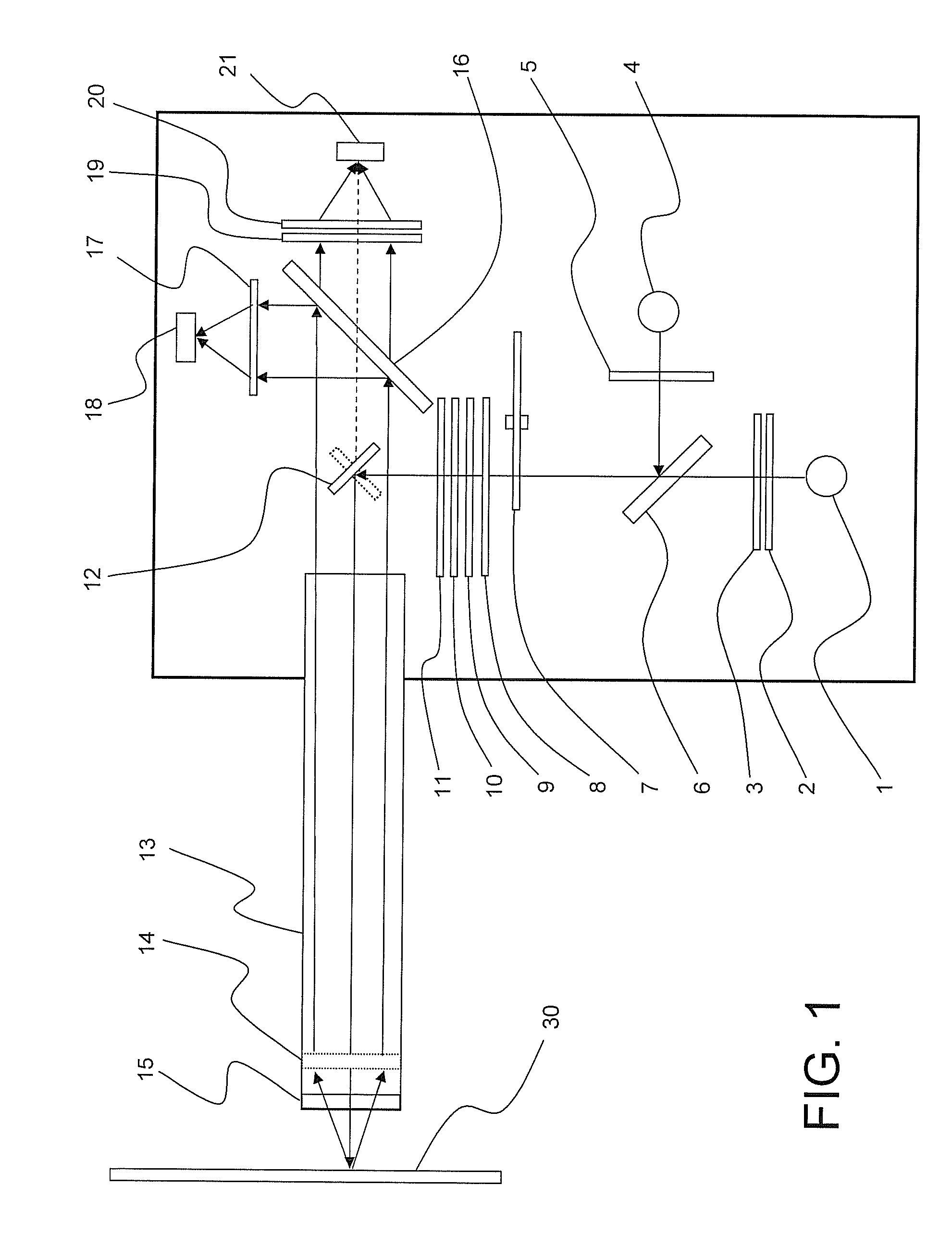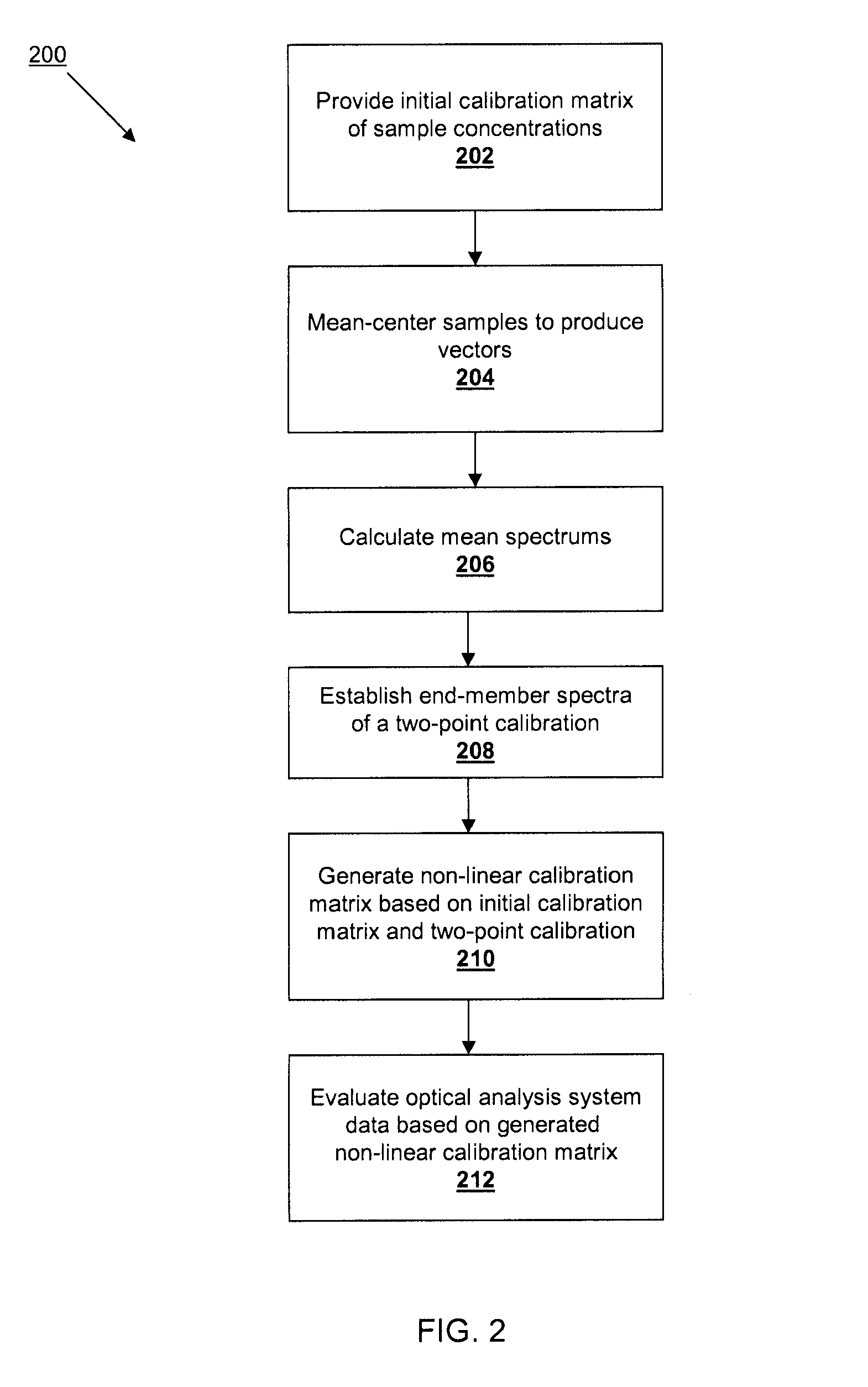Multivariate optical elements for nonlinear calibration
a multi-variate, optical element technology, applied in the direction of optical radiation measurement, instruments, spectrophotometry/monochromators, etc., can solve the problems of inability to accurately measure the data relating to one, inability to convert simple light intensity measurement to information, and inability to accurately estimate the accuracy of the estima
- Summary
- Abstract
- Description
- Claims
- Application Information
AI Technical Summary
Problems solved by technology
Method used
Image
Examples
first embodiment
[0052]In accordance with the calibration methodology in accordance with the present technology, rather than calibrating to the analyte concentration, one can calibrate to the antilogarithm of the concentration. This has the effect of producing a y-block data array that is related to the transmission-mode data according to the Beer-Lambert law. This does not fix issues with nonlinear interferences with other components of the sample, but it has been shown to improve the quality of nonlinear calibrations.
second embodiment
[0053]In accordance with the calibration methodology in accordance with the present technology, one can combine a calibration data set in a way to produce a modified calibration set that includes all the nonlinear spectral artifacts expected of a complex mixture in transmission mode, but that uses only a two-point analyte concentration vector. This results in a calibration that is generally curved if points between the two end-points are included. Such a modified calibration set is created as follows. Consider a conventional 5×5 matrix of sample concentrations with 5 levels of the analyte and 5 of an interferent species. If we take the samples at the same concentration levels of the analyte and perform an operation known as mean-centering (subtracting their average from each), the result is a set of spectra that reflect the vector of interferences for that particular level of analyte concentration. We perform this operation for each of the 5 analyte levels. The mean spectrum of the ...
third embodiment
[0055]In accordance with the calibration methodology in accordance with the present technology, a modification of the design function of the multivariate optical element design suite software is provided. Generally MOEs are designed by iterative solving to a linear function. The process works as follows: (1) An initial MOE design is selected. (2) The spectrum of the MOE is calculated. (3) The dot product of the MOE vector is calculated with each of the calibration spectra. (4) The best linear fit between the calibrated concentrations and the dot products is obtained. (5) This best linear fit is used to determine the standard error of the calibration (SEC). (6) A nonlinear optimization routine is used to optimize this SEC by modifying the design of the MOE.
[0056]In this third embodiment, this algorithm is changed in steps 4 and 5, in which the best quadratic or other nonlinear fitting function is chosen upon which to compute the SEC. If it is considered important to force the functio...
PUM
| Property | Measurement | Unit |
|---|---|---|
| frequency | aaaaa | aaaaa |
| frequency | aaaaa | aaaaa |
| optical analysis | aaaaa | aaaaa |
Abstract
Description
Claims
Application Information
 Login to View More
Login to View More - R&D
- Intellectual Property
- Life Sciences
- Materials
- Tech Scout
- Unparalleled Data Quality
- Higher Quality Content
- 60% Fewer Hallucinations
Browse by: Latest US Patents, China's latest patents, Technical Efficacy Thesaurus, Application Domain, Technology Topic, Popular Technical Reports.
© 2025 PatSnap. All rights reserved.Legal|Privacy policy|Modern Slavery Act Transparency Statement|Sitemap|About US| Contact US: help@patsnap.com



